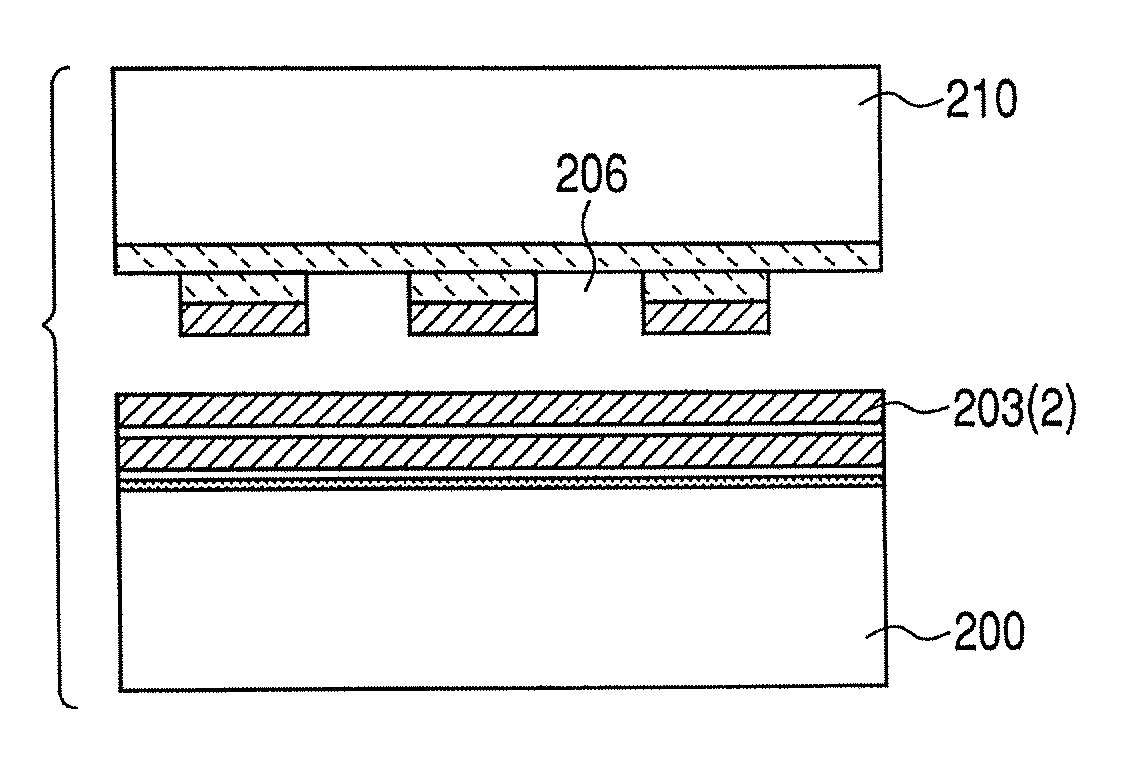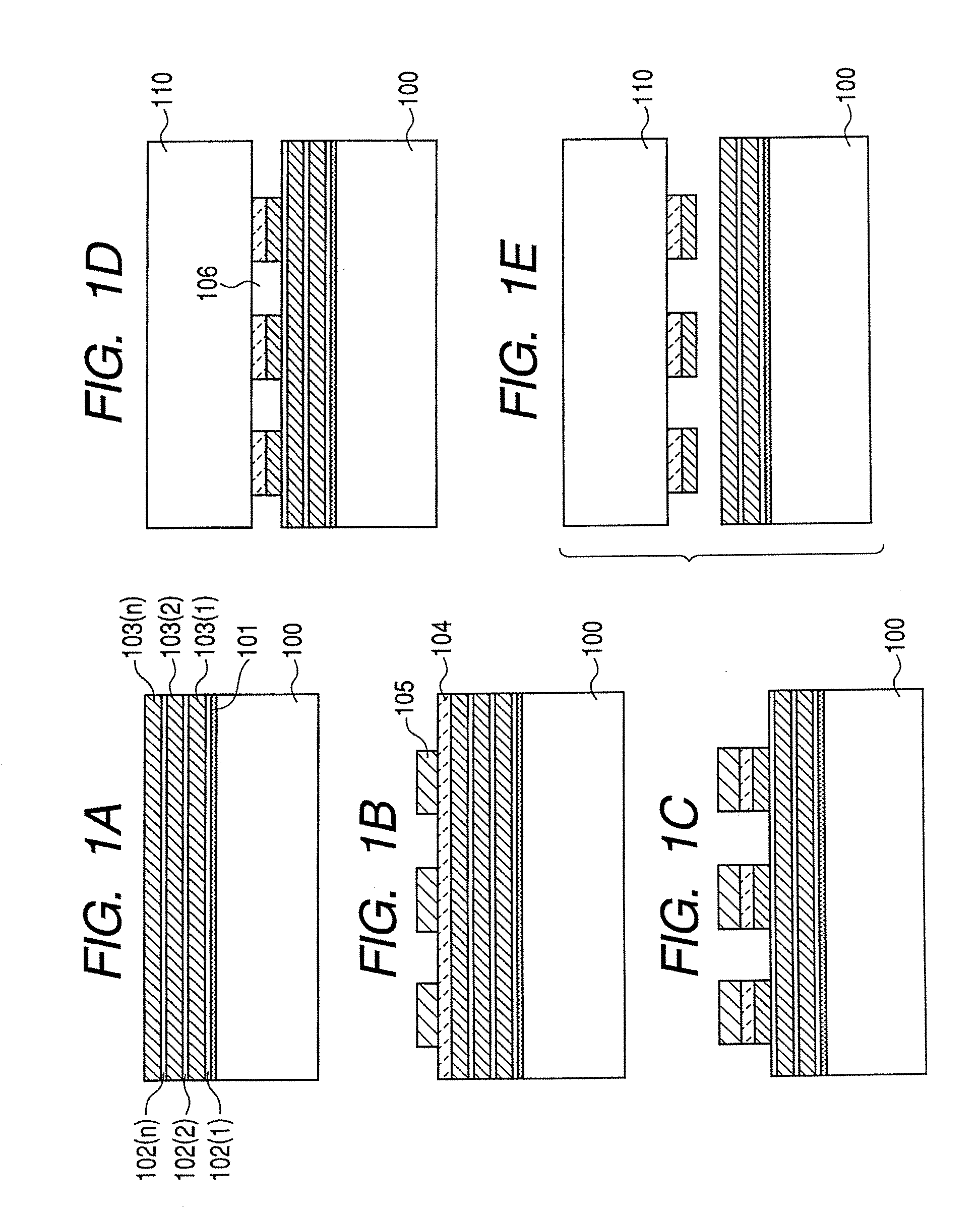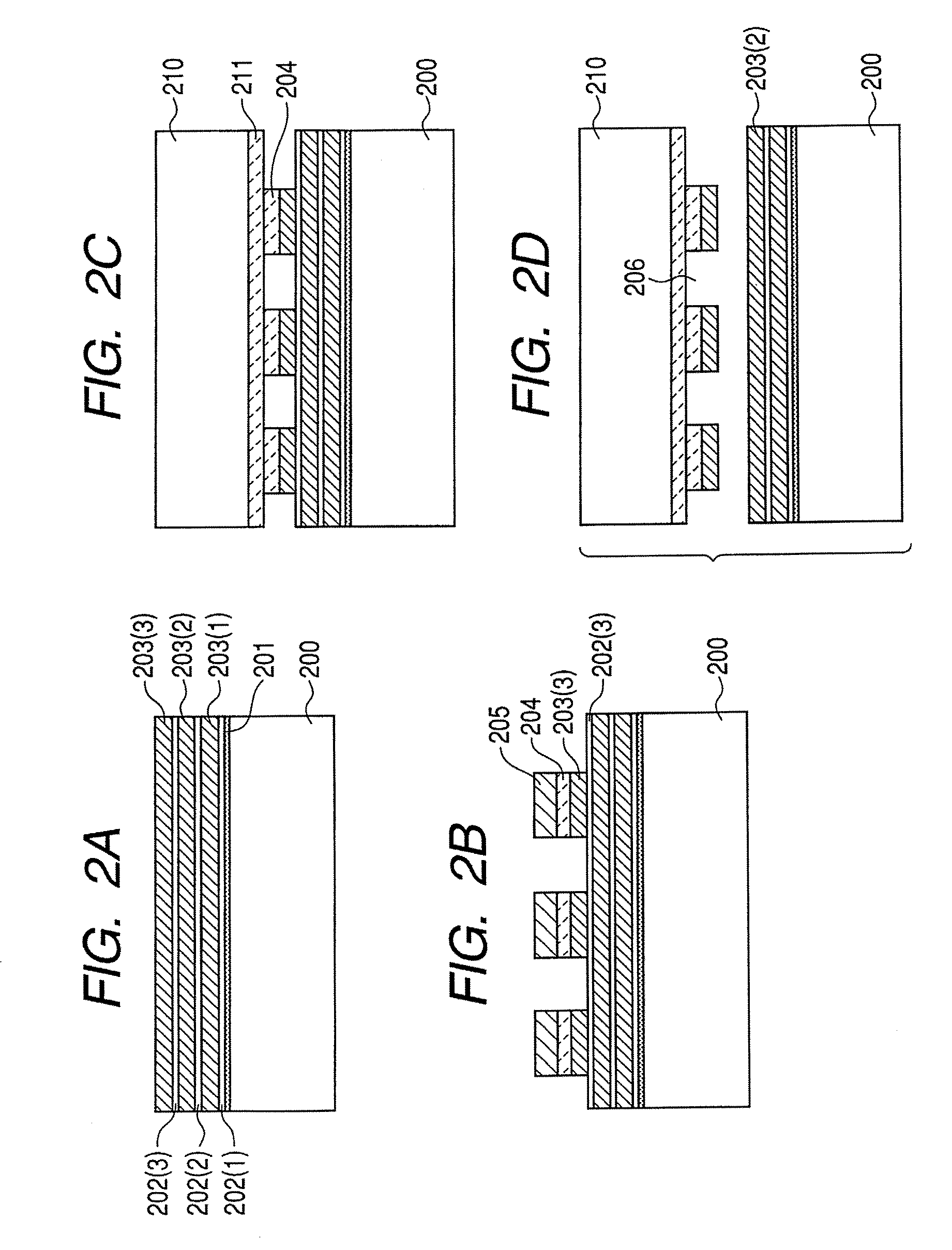Method of forming light-emitting element
a technology of light-emitting elements and substrates, which is applied in the direction of discharge tubes/lamp details, thermoelectric devices, discharge tubes luminescnet screens, etc., can solve the problems of reducing affecting the efficiency of recycling, so as to suppress the deterioration of substrates and reduce the cost
- Summary
- Abstract
- Description
- Claims
- Application Information
AI Technical Summary
Benefits of technology
Problems solved by technology
Method used
Image
Examples
first example
[0051]A first example according to the present invention will be now described with reference to FIGS. 2A to 2D. In the figures, reference numeral 200 denotes the first substrate, reference numeral 201 denotes a buffer layer, reference numeral 202 denotes a separation layer, reference numeral 203 denotes an active layer (light-emitting layer), reference numeral 204 denotes a light reflection layer, reference numeral 205 denotes a resist film, reference numeral 206 denotes an etched groove, and reference numeral 210 denotes the second substrate.
[0052]At first, a GaAs buffer layer 201 with a thickness of 20 nm, a p-AlAs layer 202(1) with a thickness of 100 nm, and an active layer 203(1) with a thickness of about 2,000 nm are grown on a 4-inch GaAs substrate 200 by an MOCVD method, as is illustrated in FIG. 2A.
[0053]The active layer 203(1) will be now described in detail below.
[0054]Specifically, the active layer 203(1) includes a p-GaAs layer to be a contact layer with the thickness o...
second example
[0067]A second example according to the present invention will be now described with reference to FIGS. 3A and 3B.
[0068]The same substrate as in the first example is prepared, an Au film is formed thereon, and the pattern is formed in the same manner as in the first example. However, an island-shaped region to be patterned is a rectangular shape having an area of 8 mm×0.5 mm.
[0069]Afterwards, the light-emitting element region of 8 mm×0.5 mm is transferred onto a silicon substrate in the same process to that in the first example.
[0070]The silicon substrate is charged into an LED process, and is produced into elements with the size of 20×20 μm arrayed at spacings of 600 dpi in the process.
third example
[0071]In the present example, the same steps as in the first example are carried out, but the following items are changed.
[0072]A Ge (germanium) substrate with the size of 8 inches is used as the first substrate. A silicon substrate with the size of 8 inches is used as the second substrate. A light reflection layer is not formed on a silicon substrate.
[0073]The present invention can be used in a method of forming a light-emitting element, and a method of forming a light-emitting element particularly by separating an active layer at a separation layer to form an active layer on a substrate.
PUM
 Login to View More
Login to View More Abstract
Description
Claims
Application Information
 Login to View More
Login to View More - R&D
- Intellectual Property
- Life Sciences
- Materials
- Tech Scout
- Unparalleled Data Quality
- Higher Quality Content
- 60% Fewer Hallucinations
Browse by: Latest US Patents, China's latest patents, Technical Efficacy Thesaurus, Application Domain, Technology Topic, Popular Technical Reports.
© 2025 PatSnap. All rights reserved.Legal|Privacy policy|Modern Slavery Act Transparency Statement|Sitemap|About US| Contact US: help@patsnap.com



